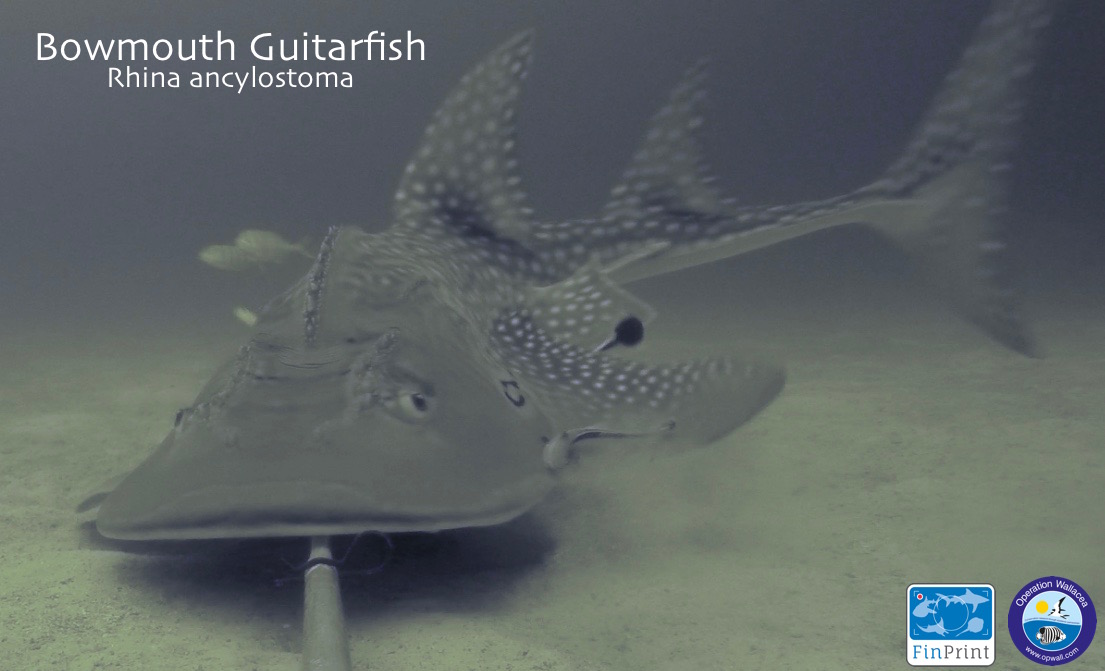

Written by and photos courtesy of Samantha Sherman
This summer was the second Global FinPrint field trip to the Bau Bau Marine Site but it was the first trip that included OpWall Research Assistants (RAs). The Global FinPrint Project (www.globalfinprint.org), a Paul G. Allen initiative that looks at global populations of elasmobranchs (sharks and rays) on tropical coral reefs using baited remote underwater video systems (BRUVS). During the first trip to Bau Bau, we discovered a higher abundance of rays and a more diverse group of species than other parts of Indonesia. This is why Bau Bau is the perfect place for this chapter of my PhD thesis. This chapter is looking for differences in ray abundance and distribution in the wet and dry season.

Indonesia is known to have some of the highest levels of shark and ray exploitation so I was not expecting a large number of elasmobranchs on the videos. Fortunately, we got 7 species of rays, including a very rare species. We also saw 2 species of sharks on the videos and an additional species when we were diving. It’s still too early to say whether there is a difference between wet and dry season as all the videos haven’t been analysed and there are still 2 more trips to go, but I’m excited that there are a lot of rays to be included in the analysis.

Working with OpWall and having research assistants meant that I could gather a lot more data and get through some of the analysis while still in the field. The RAs this summer watched over 70 videos of the 324 videos that were deployed. This gives a good indication of what the videos have captured. Similar to March, there was a high abundance of rays both inshore and at the nearby islands. We saw a few large ray groups as well, including 8 pink whiprays and 9 bluespotted maskrays! The most exciting find of the season was a Bowmouth guitarshark (Rhina anclystoma). In all the Global FinPrint videos, we haven’t seen one yet, so finding one in Bau Bau was amazing! I watched the video 100 times within a week just to remind myself that it had actually happened.


Having OpWall RAs allowed for more efficient setting of BRUVS. There were up to 4 RAs at a time on the boat, all rotating jobs. The RAs deployed the BRUVS, used the GPS to write down the data, cut bait, check depths, tie all the ropes together, and pull the BRUVS back to the surface once the deployment period was done. Working with the RAs was a rewarding experience for me. They were all motivated to help out, doing each job. Even when it came to cutting up bait for the BRUVS, the more squeamish RAs still pulled it together and did a great job! Having a fair bit of field experience myself, I know how it feels to be pushed outside your comfort zone. Being able to help the RAs and teach them new skills is why I had such a great summer and can’t wait for next season!
To see the highlight video from March click:
https://www.youtube.com/watch?v=3ZtnrY9aukE
To see the highlight video from this summer click:
https://www.youtube.com/watch?v=Wpz3k38QqnA&t=9s
You can also follow updates on this project on Twitter @SammSherman27 and @globalfinprint or join as a research assistant for summer 2018 by e-mailing seasia@opwall.com.

Social Media Links